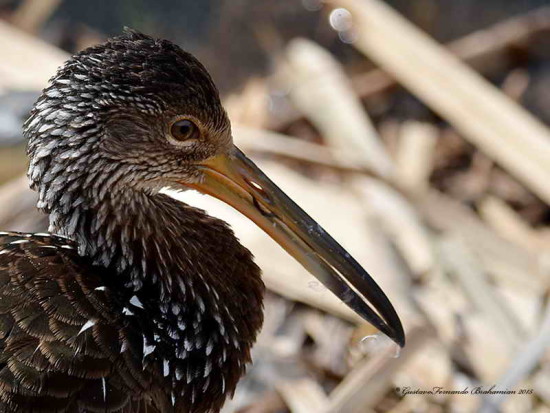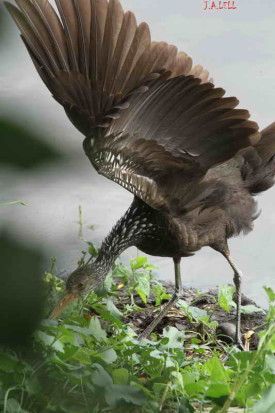Order: Gruiformes - Family: Aramidae
Status: Resident - Frequent - Breeder. Habitat: Woods
| All records since January 2014 |
|---|
| Sounds |
|---|
© Cora Rimoldi |
© Cora Rimoldi A young calling |
 © Diego Carús © Diego Carús © Nicolás Giorgio © Nicolás GiorgioIn 2015 the abundance of apple snails favoured limpkins' settling down at the pond. Six individuals were spotted and there were families breeding simultaneously as shown in the photos. (See Development cycle) |
| More photographic records since January 2013 |
|---|








